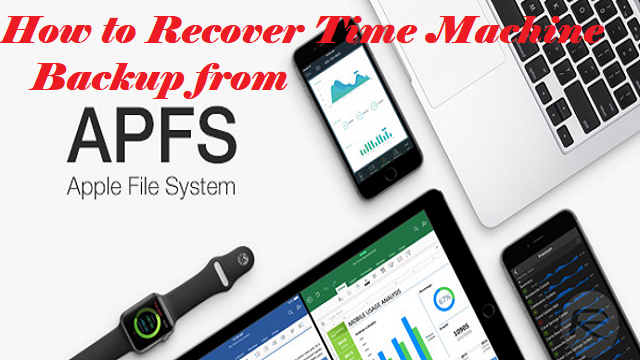
We all know that Time Machine is the tool by Apple that helps back up files and restore them when needed. There has been a lot of confusion with the backup conversion after Apple changed its default file system from HFS to APFS. For instance, there have been many questions on forums regarding users how to recover Time Machine backups from APFS disk.
Well, this guide will help you to uncover the above-said issue…
Apple File System (APFS) is the default file system found in the latest macOS High Sierra for Mac computers. If you install macOS High Sierra on the built-in SSD drive of your Mac, then the drive will automatically convert into an APFS file system. At the same time, the fusion and traditional drives remain the same.
In simple words, if you install APFS on any Mac that uses a solid-state drive as a built-in boot drive, it will automatically convert to APFS, and you will not have a choice. Those Macs that use Fusion Drives (like the iMac, for example) or old hard disk drives will not be converted.
APFS and Time Machine
While upgrading your Mac to macOS 10.13, you should not customize any settings related to Time Machine. If you have taken your backup in HFS or HFS+, it will automatically be converted to APFS-supported format. However, if you have taken a backup in APFS format, you can’t convert it to any other format.
So, if you have suffered from an unexpected data loss, you need to take some added measures to recover Time Machine backup. As the backup can’t be converted to any other format, many of you may delete it. However, it is recommended to take the assistance of a third-party tool to recover data instead of getting rid of it.
To learn how to recover Time Machine backups from APFS disk, continue reading…
As you already know, the Time Machine backup can’t be converted automatically from APFS to another format; you can take the help of a reliable tool to do this. Remo Recover for Mac would be the safest option to learn how to recover Time Machine backups from APFS disk. It has an easy-to-use interface and is known to have the highest success rate in the industry. Compatible with all the leading versions of macOS, including Sierra. It can recover your lost data from different situations.
Recovering Time machine backup from APFS disk using the Remo Recovery Tool is easy. First, Download the Remo Recover (Mac) demo version and install it on your Mac computer. As soon as you Launch the software, select the Recover Volumes / Drives option from the main screen, then follow these below-mentioned steps:
- Next, select "Partition Recovery" and choose the APFS-based Volume or drive from which the backup has to be recovered. The scanning process will be initialized.
- After completion, a list of all recovered files will be displayed in the "Data View" or "File Type View" option.
- Preview the recovered files to evaluate the recovery results using the "Preview" option and then save the scanned session using the "Save Recovery Session" option.
- Once you purchase the software, resume the recovery process using the "Open Recovery Session" option.
- Select the files you want to recover and save them at any location.
This way, you could learn Time Machine backup recovery from APFS Drive. All you need to do is take the assistance of the Remo Recover Tool for Mac and follow the simple on-screen instructions. What are you waiting for? Try this tool to recover Time machine backup data from an APFS-based disk or drive.
“Remo Recover for Mac is a safe and reliable tool that can effortlessly recover your lost data even after Time Machine failure on your Mac machines of any version”